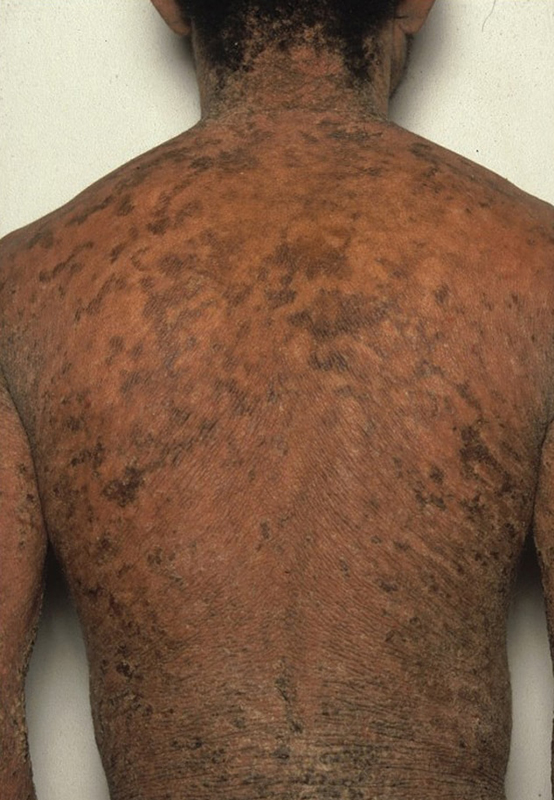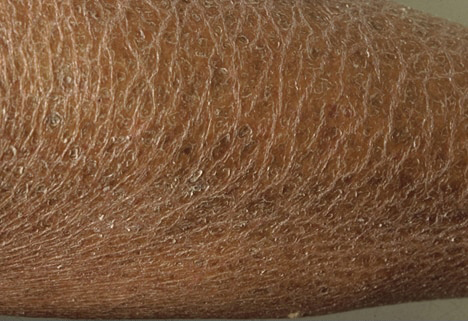Written by Dr. Pradeep

Ichthyosis vulgarisOpen pop-up dialog box
Ichthyosis vulgaris (ik-thee-O-sis vul-GAY-ris) is an inherited skin disorder in which dead skin cells accumulate in thick, dry scales on your skin’s surface.
The scales of ichthyosis vulgaris, sometimes called fish scale disease or fish skin disease, can be present at birth, but usually first appear during early childhood. Sometimes, mild cases of ichthyosis vulgaris go undiagnosed because they’re mistaken for extremely dry skin.
Most cases of ichthyosis vulgaris are mild, but some are severe. Sometimes other skin diseases, such as the allergic skin condition eczema, are associated with ichthyosis vulgaris. No cure has been found for ichthyosis vulgaris, and treatments focus on controlling the condition.

Ichthyosis vulgaris slows your skin’s natural shedding process. This causes chronic, excessive buildup of the protein in the upper layer of the skin (keratin). Symptoms include
- Dry, scaly skin
- Tile-like, small scales
- White, gray or brown scales, depending on skin color
- Flaky scalp
- Deep, painful cracks in your skin
The scales usually appear on your elbows and lower legs and may be especially thick and dark over your shins. Most cases of ichthyosis vulgaris are mild, but some can be severe. The severity of symptoms may vary widely among family members who have the condition.
Symptoms usually worsen or are more pronounced in cold, dry environments and tend to improve or even resolve in warm, humid environments.
When to see a doctor
If you suspect you or your child has ichthyosis vulgaris, talk to your family doctor or a dermatologist. He or she can diagnose the condition by examining the characteristic scales.
Also be sure to seek medical advice if the symptoms worsen or don’t improve with self-care measures. You may need stronger medication to manage the condition.
Causes
Ichthyosis vulgaris is commonly caused by a genetic mutation that’s inherited from one or both parents. Children who inherit a defective gene from just one parent have a milder form of the disease. Those who inherit two defective genes have a more severe form of ichthyosis vulgaris. Children with the inherited form of the disorder usually have normal skin at birth, but develop scaling and roughness during the first few years of life.
If genetic abnormalities aren’t responsible for ichthyosis, it’s referred to as acquired ichthyosis. It’s usually associated with other diseases, such as cancer, thyroid disease or HIV/AIDS.
Related Procedures

Leg Hair Removal

Loyalty Rewards

Body Hair Removal

Facial Hair Removal

For Dark Skin

Threading

Alexandrite Laser

Electrolysis

